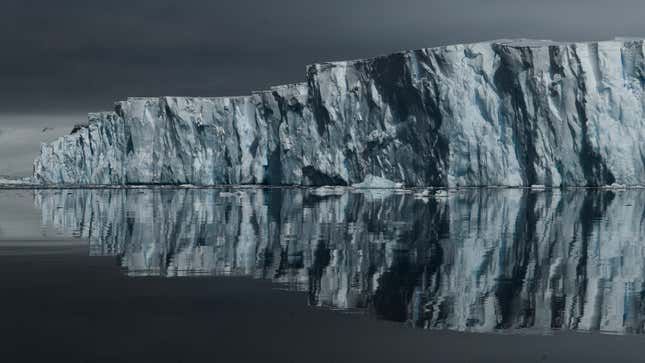
The world’s cutest submersible is about the visit the world’s most dangerous glacier. An international team of researchers set off from Chile on a 65-day voyage to Antarctica. There, they’ll deploy Boaty McBoatface and a host of other instruments to explore what’s going on underneath Thwaites Glacier, one of the horsemen of the sea-level-rise apocalypse.
The team is part of the International Thwaites Glacier Collaboration, which has spent the past few years documenting what’s going there. Their findings have been, to put it lightly, pretty unnerving. Poking and prodding the glacier and ice shelf that extends over the Amundsen Sea have revealed warm water rapidly carving channels deep into the ice and pushing farther inland. In a summary of their findings given late last year, researchers revealed that parts of the ice shelf are receding as fast as 1.2 miles (2 kilometers) per year, and the glacier could become completely unmoored from the bedrock it sits on by the time we’re ringing in the new year in 2030.
The new research cruise will help put an even finer point on just where things stand with Thwaites. The team has Boaty McBoatface—which has already completed several successful and extremely helpful missions—along with another powerful autonomous submersible from Sweden’s University of Gothenberg and a fleet of slower-moving gliders that will spend days under the ice shelf, mapping a never-explored region.
“Before we get more data, what we only know is that the ocean is melting the ice shelves,” Rob Hall and Yxi Xheng, scientists at the University of East Anglia, and Rob Larter, a researcher with the British Antarctic Survey, wrote in a joint email while en route to Thwaites. “So we’re expecting to find signal[s] of meltwater discharge from the base of ice shelves. But how much and how fast the ice shelves are melting are still uncertain. We want to get more data showing how much heat is transported toward the glaciers, and at the same time to get data showing how the ocean conditions are changing due to the melting glaciers.”

The vehicle fleet will work together to paint a complete picture of what’s going on under the ice. “Boaty,” the team wrote and which I absolutely love, “is designed for long missions and will go far in underneath the ice shelf, as close to the area where the ice meets the seabed as we can get.” The other submersible is known as Ran, presumably because Sweden doesn’t let the public name scientific research instruments, and it has acoustic instruments to map the seabed and ice shelf’s underbelly. It won’t go as far as Boaty will, though. The gliders, meanwhile, will spend months monitoring the water column until the researchers return to land.
All this effort will help us understand what’s going on with Thwaites Glacier and refine projections of sea level rise. The fate of humanity really is in Thwaites’ icy hands. The glacier is a key buttress against West Antarctica, a region that contains enough ice to raise sea 10 feet (3 meters) globally. While all that ice wouldn’t immediately pour into the ocean if Thwaites disappeared, it would certainly speed up the transition from the “fucking around” to the “finding out” phase of climate change.
“The observations we make will give some sorely needed ground truthing data for models that predict the future of the Antarctic ice sheet and sea-level rise,” the trio of researchers said.
That’s why the current mission—and the International Thwaites Glacier Collaboration as a whole—is so important. While knowing Thwaites’ rate of decline alone won’t stop it, it would certainly (one would hope) add urgency to policymakers’ efforts to get a handle on carbon pollution from burning fossil fuels. And it would underscore the urgent need for coastal adaptation before sea level rise creates even more chaos on the coasts.